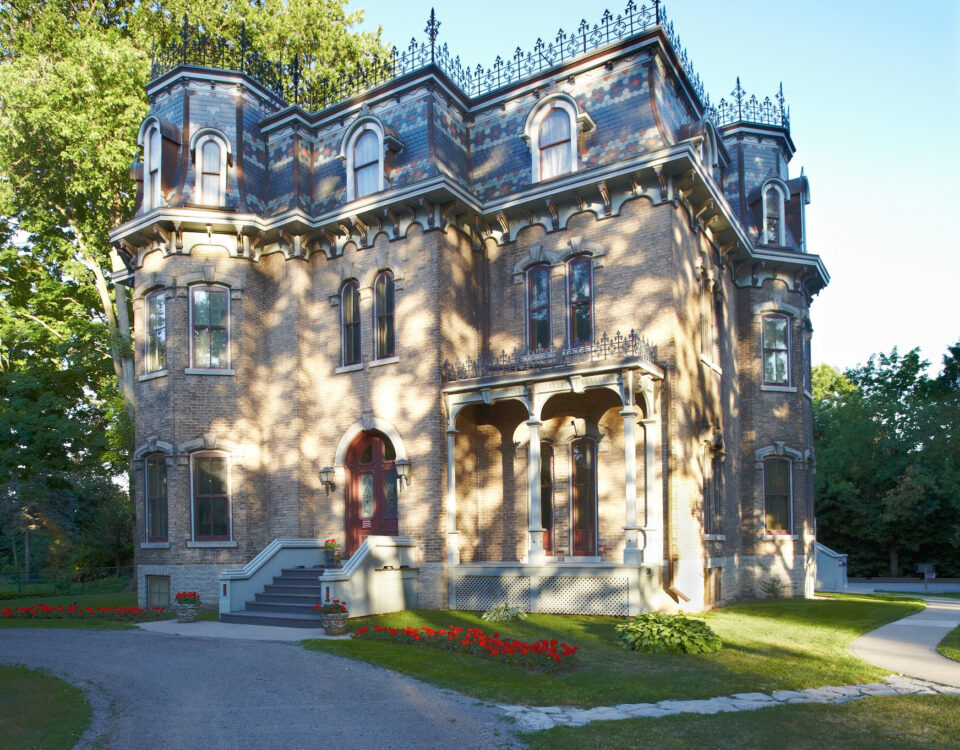Glanmore National Historic Site of Canada

Glanmore National Historic Site of Canada is designated for its Second Empire architecture, and has served as Belleville’s community museum since 1973.
Four generations of the Phillips-Burrows-Faulkner family resided at Glanmore from the time it was built in 1883, and the continuity of ownership ensured the preservation of the building’s original character.
While still a private residence Glanmore was designated a National Historic Site in 1969. The designation was in recognition of its outstanding Second Empire style of architecture. Glanmore’s grand interior, thanks to many meticulous restoration projects, features beautiful hand-painted ceilings and ornate woodwork.
In 1971, Philippa Faulkner, a celebrated artist and the last family member to own the house, sold Glanmore for use as a community museum. The museum’s impressive period-rooms display beautiful original furnishings, known as the Glanmore Collection (or Phillips-Burrows-Faulkner Collection), as well as exceptional objects from the Couldery Collection.
The Couldery Collection is named for Bertram and Cecilia Couldery. Originally from the UK, they travelled through this region in the 1880s, and decided to keep a second home in Belleville.
The Coulderys actively collected fine and decorative arts that have now found a permanent home at Glanmore. Many of the paintings on display here are attributed to the Couldery family, including those by Bertram’s older brother Horatio (1832-1918). His Victorian animal paintings at Glanmore are considered one of the most extraordinary collections of its kind in the world.
In addition to preserving and presenting artifacts and stories related to Glanmore’s storied history, and the splendor of the Couldery Collection, the museum also serves as Belleville’s community museum. It actively collects and interprets artifacts connected to the history of Belleville (the Regional Collection.)
Glanmore is also home to the William Sawyer Portrait Collection, the Manly MacDonald Collection (art and household objects connected to the artist), and the Paul Lighting Research Collection (artifacts depicting the history of illumination.)
Mailing Address
257 Bridge Street East
Belleville ON
K8P 1P4